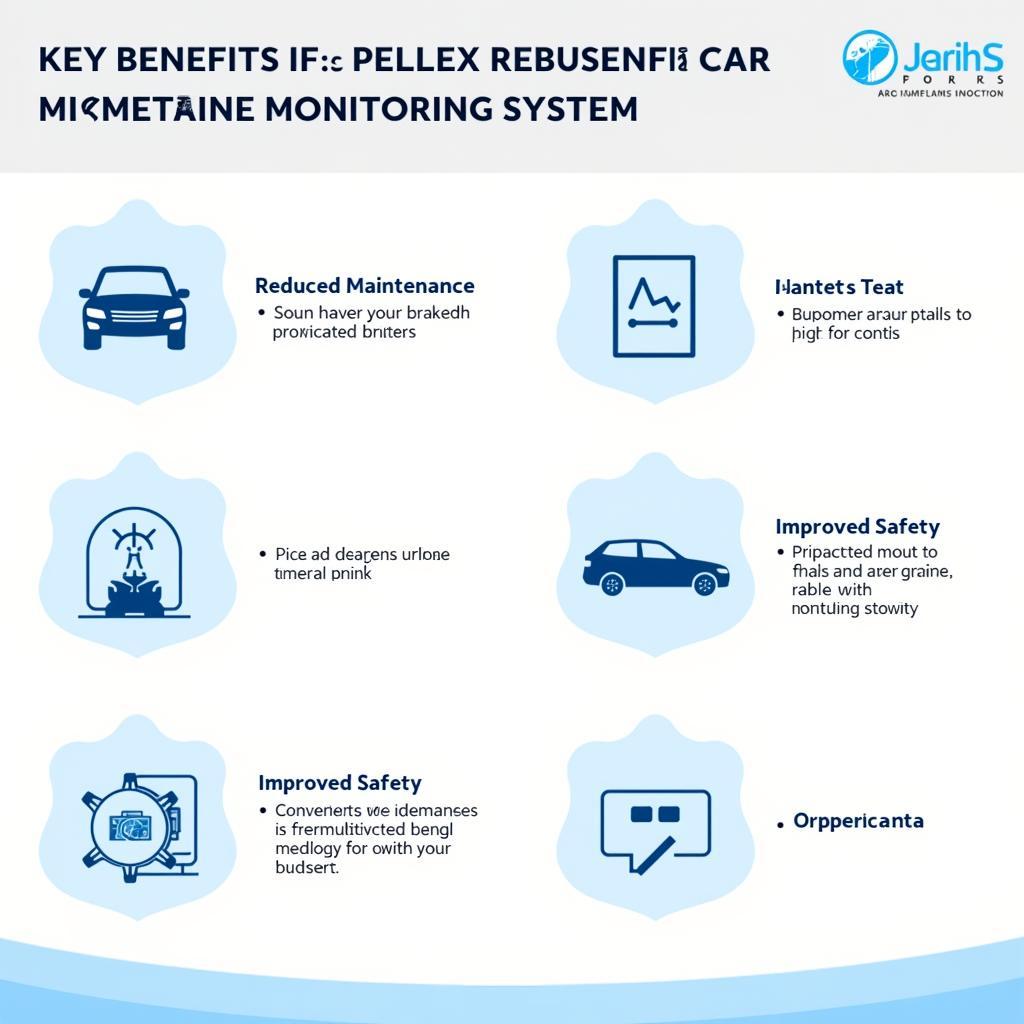Cars With A Maintenance Monitoring System are becoming increasingly common, offering drivers a convenient way to stay on top of their vehicle’s service needs. These systems use algorithms and sensor data to predict when specific maintenance tasks are required, moving away from the traditional fixed-interval schedules. This allows for more efficient upkeep, potentially saving you money and extending the life of your vehicle.
Similar to diagnostic maintenance car, these systems provide valuable insights into your car’s health. Understanding how these systems work, their benefits, and their limitations is crucial for any car owner or mechanic.
How Does a Car Maintenance Monitoring System Work?
Maintenance monitoring systems use a combination of factors to determine when service is due. These systems analyze data from various sensors throughout the vehicle, tracking mileage, engine operating conditions, and driving habits. The system’s algorithm then uses this data to calculate the remaining lifespan of key components, such as oil, brake pads, and air filters. Rather than relying solely on mileage or time intervals, these systems offer a more personalized and dynamic maintenance schedule.
Key Components and Data Used in Maintenance Monitoring
- Mileage: The system tracks the total miles driven, a fundamental factor in wear and tear calculations.
- Engine Operating Conditions: Sensors monitor engine temperature, RPM, and load to assess the stress on components.
- Driving Habits: Aggressive driving, frequent short trips, and extreme weather conditions can accelerate wear and tear, and the system accounts for these factors.
- Time: Even with minimal mileage, certain components degrade over time due to age and environmental factors.
Benefits of Using Cars with a Maintenance Monitoring System
There are several significant advantages to owning a vehicle equipped with a maintenance monitoring system:
- Reduced Maintenance Costs: By accurately predicting service needs, these systems help avoid unnecessary maintenance, saving money on parts and labor.
- Extended Vehicle Lifespan: Proper and timely maintenance based on the system’s recommendations can significantly prolong the life of your car.
- Improved Safety: The system alerts drivers to potential safety issues, such as worn brake pads, ensuring optimal vehicle performance.
- Convenience: No more guessing when service is due. The system provides clear notifications, simplifying maintenance scheduling.
For example, imagine driving in extreme heat constantly. Just like car maintenance for driving in heat, the maintenance monitoring system will alert you when your car requires specific attention. This proactive approach minimizes the risk of breakdowns and keeps your vehicle running smoothly.
 Benefits of Using a Car Maintenance Monitoring System
Benefits of Using a Car Maintenance Monitoring System
Limitations of Maintenance Monitoring Systems
While maintenance monitoring systems offer many advantages, they also have some limitations to consider:
- Sensor Malfunction: Like any electronic system, sensors can fail, leading to inaccurate readings and potentially unnecessary maintenance.
- Algorithm Limitations: The system’s algorithm relies on pre-programmed data and may not accurately reflect every driving scenario or vehicle condition.
- Over-Reliance: Drivers should not solely depend on the system. Regular visual inspections and paying attention to unusual noises or performance changes are still essential.
“Maintenance monitoring systems are valuable tools,” says automotive expert, Dr. Emily Carter, “but they shouldn’t replace a driver’s common sense and regular vehicle checks.”
What Type of Maintenance Do Electric Cars with Monitoring Systems Need?
Electric cars, despite their different powertrain, also benefit from maintenance monitoring systems. These systems track battery health, tire wear, and brake pad condition, among other things. Even though electric cars have fewer moving parts than traditional combustion engine vehicles, they still require regular upkeep.
This is similar to what type of maintenance do electric cars need. The monitoring systems play a crucial role in maximizing efficiency and performance. They can even provide insights into charging habits and their impact on battery longevity.
Maintaining Your Car with a Monitoring System
To maximize the benefits of your car’s maintenance monitoring system, follow these tips:
- Consult your owner’s manual: Understand how your specific system works and what the different alerts mean.
- Address alerts promptly: Don’t ignore warning lights or messages. Timely maintenance is key to preventing bigger problems.
- Keep records: Document all maintenance performed, even if recommended by the system, for warranty purposes and future reference.
- Don’t neglect regular checks: Even with a monitoring system, visually inspect your car regularly for any signs of wear or damage.
Conclusion
Cars with a maintenance monitoring system provide a modern and efficient approach to vehicle upkeep. By leveraging sensor data and sophisticated algorithms, these systems offer personalized maintenance schedules, potentially saving owners money and extending vehicle lifespan. Understanding how these systems work, their benefits, and limitations is essential for maximizing their effectiveness and ensuring optimal vehicle performance. If you have any questions or need assistance, please don’t hesitate to contact us at AutoTipPro. Our phone number is +1 (641) 206-8880, and our office is located at 500 N St Mary’s St, San Antonio, TX 78205, United States.
Just as you need to understand maintenance for tesla cars or what part does electric car need for maintenance, it’s important to be familiar with the specific requirements of your car’s maintenance monitoring system.






Leave a Reply